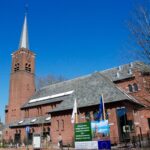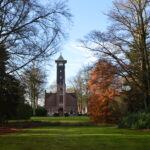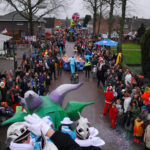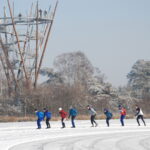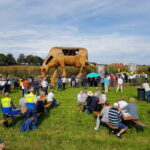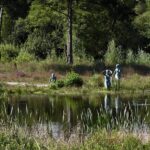Esbeek, The Netherlands
Esbeek with its some 1240 inhabitants is part of the municipality Hilvarenbeek (approximately 15000 inhabitants). It is located in the province Noord-Brabant, 12 kilometers away from the university town Tilburg, and makes exceptional use of the advantages and disadvantages of its position in the exurbs.
In 2006, more than half of the population founded a village cooperative (Coöperatie Esbeek), which implemented numerous bottom-up development projects. The cooperative’s great strength is its ability to utilize the diverse know-how of its members in all aspects of village development, incorporating external expert services and making excellent use of financial aids in combination with great personal contributions. The cooperative is also very active and well-connected on a communal, regional, national and international level.
The first SWOT analysis in 2006 uncovered the depletion of infrastructure, changes in traditional structures and a growing superannuation of the population. Inhabitants were eager to take the sustainable development of the village into their own hands. Without any financial aid, the cooperative acquired the last eatery in the center, Café Schuttershof, in 2007 in order to maintain it as a social hotspot. It also initiated the construction of some 40 “starter houses” – cheap living space for young families. As the population in the Netherlands as a whole, and in the region around Tilburg, is growing continuously, the government loosened restrictions concerning land development. Esbeek’s population is expected to grow by ten percent by 2030, necessitating the construction of about 100 accommodation units. With support from the municipality, the cooperative was able to designate new development areas and close gaps in the existing village structure. One housing project transforms disused pig housing enterprises into new living space with great respect to historic design.
The economy of the village is exceptionally prosperous. With the designation of an industrial park on the grounds of the old brickyard, some 100 new enterprises were founded over the last 14 years.
Aside from the cooperative, numerous associations and clubs characterize the social life of the village, one of which is the foundation “Vrienden van Andreas Schotel” (friends of Andreas Schotel”. Not only does it maintain a museum in the artists’ name, who portrayed the village life over centuries since the 1920ies, but also inspirits the village with life-size, plastic depictions of his works, adding original charm to the landscape.
The cooperative has implemented extensive projects since 2006. For example, a development plan for the country estate Utrecht was developed in 2007, which now houses 11 agricultural establishments. One of them farms biodynamically. Additionally, the estate includes 40 private houses, a restaurant, a hotel and a golf course. Around 12 volunteers work in forest management under the leadership of the estate administrator. One literally outstanding tourist attraction is the watch tower in the Natura-2000-areal with its award-winning modern architecture. Since 2007, so-called “village carers” tend to the elderly and in 2008, the cooperative founded a house for senior citizens who are unable to live alone. Since 2009, advice from external professionals, such as the University of Tilburg and other institutions of higher education, is used concerning issues like energy, village renewal, elderly care, residential construction and art. In 2013, the cooperation funded the expansion of the fiber-optic network throughout the entire village. Through an online support platform, the cooperation also shares its experiences with other initiatives, associations and cooperations in the Noord-Brabant province. It is considered an innovative hotspot throughout the Netherlands.
The Esbeek cooperative also initiated the formation of an energy association that constructed a small hydroelectric plant, is part of a citizens’ wind park and organized the purchase and installation of photovoltaic panels on public buildings in the village center. Additionally, energy for hundreds of household is produced in a local biogas plant and several photovoltaic plants.
A lighthouse project, recognized far beyond the province borders, is the repurposing of the secularized church as a daycare center and elementary school. It represents the successful fusion between traditional church architecture and modern elements and drastically valorized the village center. Strong initiative is also shown in respect to the inclusion of new inhabitants into the community, and in regards to improving communications and collaborations between entrepreneurs and the population. Lastly, a variety of renaturalization measures adds to the ecological accentuation and simultaneously creates tourist attractions as a local recreational area for the city of Tilburg.
Esbeek, with its active involvement of the population, not only conceptualizes, but also succeeded to implement several lighthouse projects and measures in various fields, displaying great consideration for ecological, social and economic sustainability.
Evaluated: 2020

